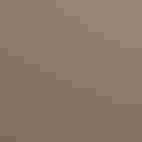Cliff Swallow
At a Glance
This swallow is probably far more common today than when the Pilgrims landed. Originally it built its jug-shaped mud nests on the sides of cliffs. However, the sides of barns and the supports of bridges provided sheltered sites that were far more widespread than the natural ones. Taking advantage of these artificial locations, the species has invaded many areas where it never nested before. Although it is continuing to spread in the east, it is still more common in the west, where practically every culvert and highway bridge seems to have its own Cliff Swallow colony.
All bird guide text and rangemaps adapted from Lives of North American Birds by Kenn Kaufman© 1996, used by permission of Houghton Mifflin Harcourt Publishing Company. All rights reserved.
Category
Swallow-like Birds, Swallows
IUCN Status
Least Concern
Habitat
Coasts and Shorelines, Fields, Meadows, and Grasslands, High Mountains, Lakes, Ponds, and Rivers, Shrublands, Savannas, and Thickets, Tundra and Boreal Habitats, Urban and Suburban Habitats
Region
Alaska and The North, California, Eastern Canada, Florida, Great Lakes, Mid Atlantic, New England, Northwest, Plains, Rocky Mountains, Southeast, Southwest, Texas, Western Canada
Behavior
Direct Flight, Flap/Glide, Swooping
Population
83.000.000
Range & Identification
Migration & Range Maps
A long-distance migrant, wintering in southern South America. Migrates in flocks, traveling by day. This is the famous swallow that returns to the mission in San Juan Capistrano, California, every spring; traditionally the return is celebrated on March 19th, although the birds actually return to the general area in late February.
Description
5-6" (13-15 cm). Short square-tipped tail. Seen from above, buffy rump contrasts with dark back and tail. Throat deep chestnut, forehead usually pale (some in southwest have dark foreheads).
Size
About the size of a Sparrow
Color
Black, Blue, Orange, Red, White
Wing Shape
Broad, Rounded, Tapered
Tail Shape
Short, Square-tipped
Songs and Calls
Constant squeaky chattering and twittering.
Call Pattern
Falling, Rising, Undulating
Call Type
Buzz, Hi, Rattle, Trill, Whistle
Habitat
Open to semi-open land, farms, cliffs, river bluffs, lakes. Widespread in all kinds of semi-open country, especially near water, from prairies to desert rivers to clearings in northern forest. Breeds where it can find sheltered vertical cliffs or other surfaces for nesting and a supply of mud for building the nest; still unaccountably scarce or missing in some seemingly suitable areas.
Sign up for Audubon's newsletter to learn more about birds like the Cliff Swallow
Behavior
Eggs
4-5, sometimes 3-6. White to pale pinkish, spotted with brown. Incubation is by both parents, 14-16 days.
Young
Both parents bring food for nestlings. Young leave nest about 21-23 days after hatching.
Feeding Behavior
Feeds mostly on the wing. Often forages in flocks, and may feed low over the water or very high over other terrain. In bad weather, may feed on ground.
Diet
Insects. Feeds mostly on a wide variety of flying insects, particularly beetles (including june beetles and adult weevils), true bugs, flies, winged ants, bees, and wasps. Also eats grasshoppers, mayflies, lacewings, and various other insects, plus some spiders. Occasionally eats berries.
Nesting
Typically nests in colonies, sometimes with hundreds of nests crowded close together. Nest site is usually on vertical surface with some overhead shelter. Natural sites were on cliffs; most sites today on sides of buildings, under bridges, in culverts, or similar places. Nest is made of dried mud and shaped like a gourd, with large chamber for nest, narrowing to small entrance on side. Both sexes help build nest; inside of nest sparsely lined with grass and feathers. May repair and reuse old nest, sometimes that of another species.
Conservation
Conservation Status
Declines have been noted in a few areas, but general continent-wide trend is toward wider range and higher numbers.
Climate Threats Facing the Cliff Swallow
Choose a temperature scenario below to see which threats will affect this species as warming increases. The same climate change-driven threats that put birds at risk will affect other wildlife and people, too.








